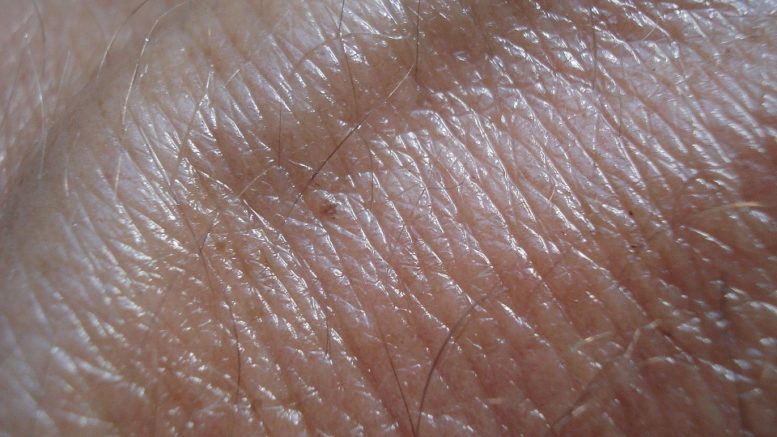If the skin has some kind of malignancy that appears within it and rapidly growing, it’s more likely skin cancer. There are actually two kinds of skin cancer, which are non-melanoma and Melanoma. While these types of cancer might sound scary, they can be easily cured as long as they are detected at the early stage. However, Melanoma is quite a rate and more aggressive than the other one, but, on the positive side, the majority of skin cancers are non-melanoma. Having said that, we are going to discuss non-melanoma, its common causes, symptoms, and, more importantly, skin cancer treatment needs and prevention strategies.
What is non-melanoma skin cancer?
Non-melanoma, as we have mentioned earlier, is a type of skin cancer that is much easier to treat compared to melanoma type of skin cancer. The human skin consists of two layers, which are the epidermis and the dermis. While the epidermis is the skin’s outer layer, the dermis, on the other hand, is the layer directly beneath the epidermis. The skin cells are made up of three types of cells – the basal cells, squamous cells, and the melanocytes. Non-melanoma cancer can form either in basal cells (Basal cell carcinomas) or in the squamous cell (squamous cell carcinomas).
What causes the non-melanoma skin cancer?
Below are some of the reasons why non-melanoma skin cancer can occur in a person.
Too much sun exposure
When a person’s skin has overexposed from the sun’s ultraviolet radiation, there’s a high chance that the non-melanoma skin cancer might develop. This is the reason why a lot of people living in high altitudes locations or in areas with bright sunlight all-year-round have a higher chance of developing this type of skin cancer. Moreover, people who like to stay outdoors during midday are also prone to having this cancer. This is the reason why a lot of dermatologists are discouraging recreational sun tanning from avoiding the risk of skin cancer.
Furthermore, even if the sunlight does not directly hit our skin, the ultraviolet type A radiation can penetrate car and home windows and other kinds of glasses. This means that we are still vulnerable even if we are inside our car or in our homes. Moreover, ultraviolet type A radiation will not only cause cancer but also cause our skin to age and get wrinkles.
Weakened immune system
People who have diseases already in their bodies, such as leukemia and HIV/AIDS, have higher chances of developing skin cancer because they are more likely to have a weakened immune system. Also, people who have a weakened immune system due to organ transplant or bone marrow/stem cell transplant have also at risk of developing non-melanoma skin cancer.
Indoor tanning
Similar to recreational sun tanning, indoor tanning facilities such as tanning parlors, sun lamps, and tanning beds can increase the risk of developing all types of skin cancer, including the worst type of skin cancer, the Melanoma.
Fair skin complexion
This would be bad news for people who have a fair complexion, blue eyes, blond or red hair, and freckles since their skin can easily burn under the sun rather than getting tanned.
Race/Ethnicity
According to a study, white people have a higher chance of getting skin cancer compared to black people.
Precancerous skin conditions
People with Rough, brown, or red scaly patches on their skin are commonly called Bowen’s disease, and these can turn to squamous cell cancers if overexposed in the sun.
Gender
According to some research, older white men and younger white women are more likely to develop non-melanoma skin cancer.
Age
People aged 50 and above are at high risk of developing non-melanoma skin cancer, especially if they are exposed to UV radiation for a significant amount of time.
History of sunburns
People who have already experienced sunburns before are more likely to have a higher risk of developing non-melanoma skin cancer.
Previous skin cancer
Even if people with skin cancer are cured of the disease, there’s still a high chance of developing new skin cancer within five years if they don’t change their lifestyle.
Medications
Medications that suppress the human immune system, certain types of steroids and other types of medications that make the skin sensitive to sunburn can also increase the chance of having skin cancer.
Ways to prevent getting non-melanoma skin cancer?
- Limit your sun exposure between 10 in the morning and 4:00 in the afternoon.
- Always wear UV-protective clothing, including shades, a wide-brimmed hat that protects your neck, ears, and your face.
- Use a broad-spectrum sunscreen that can protect your skin from both UVA and UVB radiation with at least have an SPF 30 or more.
- Avoid recreational sunbathing
- Avoid indoor tanning
Always visit your dermatologist for a checkup, proper skincare, and skin cancer treatment if necessary.
Article edited and fact checked by our editorial team.
References:
- Gandhi SA, Kampp J (November 2015). “Skin Cancer Epidemiology, Detection, and Management”. The Medical Clinics of North America. 99 (6): 1323–35
- Bens G. Sunscreens. Adv Exp Med Biol. 2014;810:429-63. doi: 10.1007/978-1-4939-0437-2_25. PMID: 25207381.
- Linares MA, Zakaria A, Nizran P. Skin Cancer. Prim Care. 2015 Dec;42(4):645-59. doi: 10.1016/j.pop.2015.07.006. PMID: 26612377.
- Jean L. Bolognia, Julie V. Schaffer, Karynne O. Duncan (2014). Dermatology Essentials. Elsevier – Health Sciences Division.
